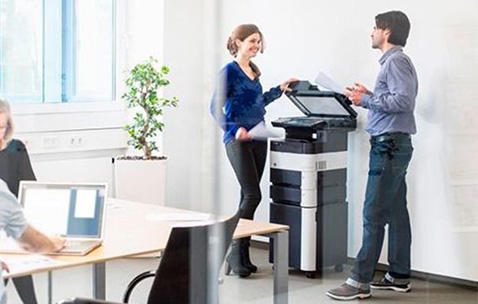Selecting the right office copier is crucial for maintaining productivity and efficiency in any workplace. With numerous options available on the market, it can be overwhelming to determine which copier will best suit your office needs. To help you in this decision-making process, we have compiled a list of essential criteria to consider when choosing an office copier. By understanding these factors, you can make an informed decision and find the best office copier that aligns with your requirements. Let’s dive in!
Print Volume and Speed:
One of the primary considerations when choosing an office copier is the expected print volume and required speed. Assess your office’s printing needs by considering the average number of pages printed per month and the desired printing speed. A high-capacity copier with a fast printing speed will ensure efficient workflow and prevent bottlenecks in a busy office environment.
Copy and Scan Functions:
Evaluate the copier’s copy and scan capabilities, as these functions are essential for most office tasks. Look for features such as automatic document feeding, duplex scanning, and advanced scanning options like OCR (optical character recognition) for enhanced document digitization and management.
Paper Handling and Finishing Options:
Consider the copier’s paper handling capabilities, including paper tray capacity, compatibility with different paper sizes, and the ability to handle specialty media such as envelopes or cardstock. Additionally, assess the copier’s finishing options, such as stapling, hole punching, and booklet making, which can streamline document production and save time.
Connectivity and Integration:
In today’s digital age, connectivity, and integration features are crucial for seamless office workflows. Look for copiers that offer various connectivity options, such as Wi-Fi, Ethernet, and mobile printing capabilities. Integration with cloud storage services and document management systems can also enhance collaboration and streamline document workflows.
Here are some of the key connectivity and integration features to consider:
Wireless Connectivity: Many copiers now come equipped with Wi-Fi capabilities, allowing you to connect to the copier wirelessly from your computer or mobile devices. This enables convenient printing and scanning without the need for physical connections or cables.
Ethernet and Network Connectivity: Ethernet ports on copiers enable direct connection to your office network. This allows multiple users to access the copier from their computers, making it a suitable option for shared office environments.
Mobile Printing: Look for copiers that support mobile printing technologies such as AirPrint (for iOS devices) or Google Cloud Print (for Android devices). These features enable you to print directly from your mobile devices without the need for a computer, providing flexibility and convenience.
Cloud Integration: Copiers with cloud integration capabilities allow you to connect and sync with popular cloud storage services like Google Drive, Dropbox, or Microsoft OneDrive. This enables seamless access to your documents and allows you to print or scan directly to and from your cloud storage accounts.
USB and External Device Support: Some copiers have USB ports or memory card slots that enable direct printing and scanning from USB drives or memory cards. This is useful for quickly accessing and printing documents or photos without the need for a computer.
Cost and Efficiency:
Evaluate the total cost of ownership, including initial purchase price, ongoing maintenance, and consumables such as ink or toner. Consider energy efficiency features that can reduce operational costs over time. Additionally, explore features like automatic duplex printing and energy-saving modes to minimize paper and energy consumption.
User-Friendly Interface and Security:
A user-friendly interface is essential for efficient operation and reduces the learning curve for employees. Look for copiers with intuitive touchscreen displays and easy navigation. User authentication, data encryption, and secure printing are vital for protecting sensitive information in the office.
Conclusion:
Choosing the best office copier involves considering a range of criteria that are specific to your office’s needs and requirements. Evaluate print volume, speed, functions, cost, and security to choose an office copier that boosts productivity and meets needs. Research and compare office copier models carefully; consult trusted vendors to find the best fit for your needs.


